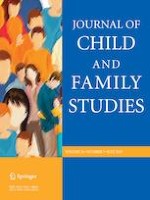24-01-2023 | Original Paper
Explaining Adolescent Problematic Behavior: An Application of the Family Stress Model and the Family Investment Model
Gepubliceerd in: Journal of Child and Family Studies | Uitgave 7/2023
Log in om toegang te krijgenAbstract
Building upon theoretical elements of the Family Stress Model and Family Investment Model, this study investigates how family financial resources and parental time working are associated with adolescent problematic behavior. Data are from the 2005 and 2007 Panel Study of Income Dynamics Main Study and the 2007 Child Development Supplement sampling 1093 adolescents aged 10–19. Path Analysis was employed for analyses. Findings are that (1) Higher income and assets are associated with less severe adolescent problematic behavior via the psychological well-being of caregivers and family economic stress, (2) Longer parental working time is associated with more severe adolescent problematic behavior via the psychological well-being of caregivers, and (3) In situations where a family needs to consume all their assets at once, working longer is more influential than financial resources regarding to adolescent problematic behavior and (4) In situations where a family can gradually consume their assets, working longer has a similar level of effect as financial resources regarding to adolescent problematic behavior. Findings support providing economic support at the family level and direct services to improve caregiver psychological well-being and adolescent problematic behavior.
